“There’s cracks,” Del is saying, “up on the Smoky, that’re so deep, you can drop a rock down in ‘em, and you can’t hear the first bounce for ten, maybe twelve seconds. There’s smoke comin’ out of ‘em…Those coal seam’s been burnin’ for thousands of years.”
We’ve been bouncing up the Smoky Mountain road now for about a half an hour. It’s a left turn at the Garkane shop in Escalante, and outside of town, the road enters a canyon that winds down out of the uplift that creates the Kaiparowits Plateau.
“You could get rid of a body in one-a them cracks,” says Del. “Not that I’d want to do that, but it’s funny how you can get to thinkin’ about that kinda thing way up here.”
We’ve come around, and around, the road curling intestinally through the broken landscape- down through Water Canyon, and back up across a sage bench, a brief interlude of straight before we plunge again into the winding vastness of canyon and pinon and cedar and rock and dust……we straddle Oil Well Bench, and down and up and around……. Del tells me, between rodeo stories, and Army stories, that we’re on his grazing allotment now. We’re higher, approaching 7000 feet in elevation, an hour and a half and thirty some miles from town. There’s some feed here, where I hadn’t seen any grass at all in the lower country.
“Damn rabbits, they’ve eaten all the feed,” Del says as the latest in an unending procession of jackrabbits dashes across our path.
“And the ponds I’ve got that didn’t bust last fall in the flood are dryin’ up. We got to find them cows and get ‘em outta here before all this country burns up next month.”
It’s the first week of June, and Del has brought me along for the ponds. I’m no cowboy, but I can run heavy equipment, and work on it. A few years ago, Del bought an old front-end loader to fix his ponds, which he has scattered around the Kaiparowits, from Oil Well Bench clear down to Lake Powell. He hasn’t used the machine for a couple of years, but last October, we had what has been called a 100-year flood. The flood burst the dikes that created most of his water impoundments, and he’s hired me to fix the breaches. He has at least six broken ponds, maybe more, if I can find them.
We finally reach the line shack at the Collet-Top, and Ron, Del’s son, drags out the generator and electrical cords from a shed while I get a look at the machine I’ll be using for the next several days. It’s in rough shape. The right front tire is flat, the batteries are dead, the fuel pump is nothing more than a cylinder of rust, and the filters are plugged with foul brown algae.
Take the red truck, Del commands. Run back to town get what you need.
Several hours later, I return. We install a new fuel pump and fuel filters, air up the tire, hook up new batteries. The machine roars to life, and I rumble down the road towards the first pond to be repaired, some six miles away.
The next day, I get a couple of hours work in before another tire flattens beneath me. I am able to jack up the rig, using its own hydraulics, and remove the rim. The inner tube has disintegrated, so I’m off to town for a new one. I return, struggle to get the tire re-installed on the machine. There goes day two.
Del and Ron haven’t had much luck finding the cows. What they did find they load up in the trailer and off they go. I’m on my own now. I’ve got provisions- Mountain Dew and some hamburger, coffee, several boxes of instant macaroni and cheese, gasoline, diesel fuel, a truck, tools, the line shack, a DVD Player and a collection of Western movies.
The sun sets behind the mesa top. I fire up the generator, but the din gets on my nerves. I go outside and turn it off. Immediately, the stars and the silence take over. I’m nearly 40 miles of rough road from the nearest human habitation- it’s as close to wilderness as one can get in the lower 48 states.
I just stand out in the dark- there’s no moon, and I take in the warm night. There isn’t a sound, not a coyote, a cricket- it’s just me and the wind, and the stars. I feel—well, small, of course, but not insignificant, not alone… I feel proportional with the rest of creation. I’ve taken off my seven-league boots, at least for the moment. I reckon I am where I’m supposed to be.
The government, that is, the Forest Service, the BLM, and the Park Service, the three land management agencies that affect the lives of folks in southern Utah the most, have an interesting definition of the word “wilderness”. The definition was forced upon the various Agencies by the 1964 Wilderness Act. Written by Howard Zahniser, the words have an idealistic, noble ring to them:
“A wilderness, in contrast with those areas where man and his own works dominate the landscape, is hereby recognized as an area where the earth and its community of life are untrammeled by man, where man himself is a visitor who does not remain.”
-The Wilderness Act
The language of the Act is fulsome— a perfect encapsulation of the ethos and tenor of the age, when the ideas of America sending a man to the moon, of defeating poverty, of being the “leader of the free world” and of protecting the “wild” places all seemed possible.
It is also the language of a thoroughly civilized man. Zahniser, like his compatriots in the burgeoning wilderness movement of the early 1960s, was utterly indoctrinated with the ethos of the good that could be accomplished by rational, well-educated, Anglo-European white men. It was an ethos that began in the 19th century, with the concept of the duty of white peoples to bring the blessings of civilization to the rest of the world, whether the rest of the world wanted them or not. It is impossible to understand what Zahniser meant by a “wilderness”, “untrammeled by man” without taking into account his background.
Howard Zahniser was raised in western Pennsylvania. His father was a Methodist minister, and Harold attended Greenville College, which was affiliated with the Free Methodist Church. There, Zahniser developed his love for literature and for the out of doors. He worked for various Federal Agencies, including the USDA Bureau of Biological Survey and the US Fish and Wildlife Service. He went on to become the Director of the Wilderness Society.
The wilderness, for Howard Zahniser, was a place one went to marvel at the handiwork of God, to be inspired by the non-human world, and then to return, refreshed and rejuvenated, to the realm of humanity. The wilderness was never a place to live. It was to be a sanctuary for things holy, the handiwork of the Creator, as opposed to the base works of man. It existed only as it could be contrasted with a 20th century world of atomic weapons, megalopolis, superhighways, and an industrial economy. A wild human, for whom there exists no dichotomy between his own works and those of nature, could have never written The Wilderness Act.
It’s morning, and I get up, fry some eggs and some SPAM. Good to go. I walk out to the front-end loader and fire her up. It turns out to be a long day. I solder radiators, wrestle more flat tires, rig a makeshift temperature gauge. I clean, and re-clean, and clean again, the stinking algae from my only fuel filter.
Del was nervous about leaving me out there all by myself. “It’’s a long way to help, and if you get in trouble up there, you’re on your own.”
The next morning, day four, I fire up the machine and lurch along the Smoky Road to fix the last pond. I am happy because it seems that I have finally whipped this infernal hunk of iron into some semblance of mechanical integrity.
It’s already hot as I begin to scrape the half-dried muck from the bottom of the pond and deposit it onto the dam that forms the impoundment. I can’t fill the breach head-on because the ten-ton behemoth will be mired in the grey muck that lies just below an innocent looking surface of dried sand. So, I drive out along the top of the earthen dam, which is barely wide enough to carry the loader, and dump my cargo of sand into the breach from above. If I look down to my left, the earthen rampart falls off steeply for about fifteen feet. The dike curves so tightly, I have to be extremely careful not to steer myself right off of it. The thought of tumbling sideways down such a slope, encased in a grinding, roaring hunk of yellow-painted steel, is not something I look forward to.
When I do go over the edge, it doesn’t happen as I imagine it would, suddenly and violently. I have just dumped soil in the breach, and now I drive back and forth across the top of the dike to compact the newly placed earth. As I back up, my rear wheel catches in a soft spot and wiggles its way off the edge of the dike. The weight of the machine carries me, too suddenly, and yet at the same time quite slowly, off balance. I find that the machine, despite a fully opened throttle, is sliding down the outside of the dike, and tipping, inexorably, past its upright center of gravity.
I scramble towards the high side of the machine. The door on that side has been jammed shut by some long-forgotten mishap. I claw through the detritus that litters the inside of the cab, throwing pillows and greasy rags and odd tools out of my way. My exit is a hole that was once a window filled with glass, but now is just what I want it to be, a gaping rust framed void through which I can thrust my body, and thus escape being crushed to death.
I exit the machine and cling to the outer superstructure, where I pause for the split second necessary to contract my muscles for a desperate leap. Just then, the machine is caught and held by a scraggly pinon. For the moment, the machine’s somersault has been arrested. The motor roars, and the hydraulics whine in a soft, encouraging way.
Part of my terror during these last few seconds has been wondering what to tell Del. I am discomfited that I have put myself in this predicament. The cost to recover this machine will be more than it is worth.
Still perched on the outside of the machine, I reach in and tentatively manipulate the hydraulic valve that controls the big bucket on the front of the machine. The immediate result is that I tip the machine farther off balance, and the little pinon begins to crack and groan piteously. I slam the valve in the opposite direction, and I can feel the machine settle again, closer to its center of gravity. I am covered with a hot fear-sweat, but I know I am on to something. From my position, (I’m not about to crawl back inside!) I initiate a judicious combination of bucket manipulation and back and forth movements of the wheels. The machine stabilizes. With a hefty dose of luck and what skill I can muster, I think I can drive this machine out of the arroyo!
By some quirk of free-association, my narrow escape from embarrassment, if not death, brings to my mind the original inhabitants of this remote land. The band of Paiutes that roamed the Kaiparowits was called Tuh’Duvaw, which means “Barren Valley People”. They were so named because the long bench that stretches from the present town of Escalante along the base of Fifty Mile Mountain was a notoriously harsh environment, even for the Paiutes. Traditionally, the Tuh’Duvaw roamed from the Waterpocket Fold down to Glen Canyon, then over to the Paunsagunt Plateau and across to the top of Boulder Mountain. It is a vast territory, twice the size of Connecticut, and one of the largest territories of all the bands of the Paiute Tribe. It was also one of the poorest, for it is a country of too little water and too little soil; too much slickrock, and too much sunlight. With the advent of Europeans, other Paiute bands adopted the tools and accouterments of white civilization- horses, felt hats, frock coats, and firearms. The Tuh’Duvaw, poor as they were, were both unable and unwilling to stray from their traditional folkways. It took more work, more resources, to maintain the white man’s ways of living. The country of the Tuh’Duvaw, the heart of which was the Kaiparowits, did not give up resources with ease or generosity. It was better, easier to cling to the old paths.
As time passed, and the surrounding bands of Paiute became richer, and lost more and more of their territory, the Tuh’Duvaw became more isolated. In the Paiute world, it was always important to marry outside of the band. The yearly or semi-yearly get-togethers, or fandangos were vital to the arrangement of marriages between clans and between bands. On the shores of Fishlake, and in many other meeting places, the Paiute would gather, to dance and feast on rockchuck, which was roasted in pits with spring beauty bulbs and biscuit root. While the young men and women eyed each other at the dances, the elders would talk of the past year and negotiate dowries.

Soon, it became apparent that the Tuh’Duvaw were not able to display the horses, guns and European clothing that other Paiutes found to be valuable. The Tuh’Duvaw continued to wear their traditional garb of woven rabbit skin cloaks. Rabbits were caught using long nets, which the Tuh’Duvaw fashioned from dogbane cordage. Rabbit skins—hundreds of them—were painstakingly tanned and then rolled up in an ingenious fashion and cut into long strips. The cloaks were then woven from the strips, like cloth. The robes were amazing in their complex manufacture and in the amount of time and effort that went into their creation. But wealth is a concept, and the other Paiutes wanted horses and guns. Time passed, and it became more difficult for Tuh’Duvaw men and women to find mates at the fandangos. Maybe, after a while, the young Tuh’Duvaw left their home of sky and rock and empty space to find a different life, a more social life among their relatives in Kanosh or in Richfield, where they could find work and money, maybe a husband or a wife.
By the 1920s, there was only a handful of Tuh’Duvaw left in their vast ancestral homeland. These lived in a squalid camp on the outskirts of Escalante. They subsisted on the begging of flour, which they called pra’o, and by doing laundry and other odd jobs for the townspeople, in return for a coin or two. By the ‘30s, the last of the Tuh’Duvaw, a man named Tommy, (or perhaps Timmican, after the famous Paiute chief), had moved to Richfield. The last wild people had left behind the emptiest land in the entire continental United States.
The robes of the Paiutes got me to thinking. The Kaiparowits plateau was their home, and the Tuh’Duvaw had trammeled it all over the place. Was it wilderness to them, I wondered?
In other languages, words that can be translated into English as “wilderness” usually mean “uninhabited region”. The Greek word eremos means “lonesome,” “waste,” “desolation.” The Hebrew words that can be translated “wilderness,” almost all have a meaning of “uninhabited territory.” The Spanish word for wilderness, desierto, means “deserted,” “desolate,” “uninhabited.”
Our English word can mean the same thing of course, and I suppose this was what Zahniser intended when he penned the definition found in the Wilderness Act. But I think that we accept this only at the expense of a deeper meaning of the word.
“Wilderness” is a combination of two words, and means, exactly, “the wild deer place.” To the ancient Germanic tribes who gave us our language, the “wild deer place” was a vast and forbidding unknown, a cipher, into which offenders of the social order were exiled, often never to be seen again. It wasn’t a place for inspiration and relaxation; it was that void which personified the primal fear of abandonment and alienation. Worst of all, somewhere in that awful place lived others…… people who did not obey the same laws, follow the same customs, or speak the same language……wild, dangerous, unpredictable humans.
The English word “wild” stems from a proto-Indo-European word, “ghwelt”, from which is also derived the word “wool,” which means “unshorn,” with its attendant connotation of something wild, unkempt…… wooly.
“Ghwelt” literally means untamed. The Latin word “ferus,” from which we derive our words “fierce,” “feral,” and “ferocious,” also stems from this same root, “ghwelt,” through its cognate, “ghwer.”
Thus, a wilderness, according to the philology, is a savage, raw, lawless, inhospitable, and unwelcoming place. To the Tuh’Duvaw, the Kaiparowits was anything but this. It was safe, familiar, known……they knew how to live comfortably, even stylishly, in its vastness.
Why did the Tuh’Duvaw leave? For them, the Kaiparowits had become a desierto, an empty place, a place of exile. The civilizing energies of the whites, and their mental concepts of wealth and status had made the members of this small band so poor and so lonely they couldn’t live any longer away from the rest of their people. Thus, the Kaiparowits had, for the Tuh’Duvaw, gone from being their home, no wilderness at all, to a place of isolation and exile—as true of a wilderness, in the sense of the word as Zahniser uses it, as there ever was. The heartbreaking irony—it was civilization that created the wilderness, where one had never been before!
I wondered what it might be like if somehow, the Tuh’Duvaw had hung on, hadn’t given in to the loneliness and the longing for their relatives. What if they were still here, still a wild, free people, and they weren’t so pleased about me digging up the earth with my big machine? What if they guarded these remote hills and canyons jealously? What if it were actually dangerous to trespass on their land?
It seemed to me that such a place would be really wild.
Jack Turner, Aldo Leopold, Bill Plotkin, and countless others talk a lot about how essential wilderness is for the preservation of the human soul. I don’t have a clue as to what a soul might be, but I think I know why it is intimately connected to wilderness.
When a landscape is “protected” and “preserved” through legislation and legal language, and demarcations on a map backed up with surveys and scientific studies and permits and regulations and restrictions and user fees and rangers and guns and fines and …… well what is wild about that?
And when people from the city go there encased in neoprene and Gore-Tex™™ and nylon, carrying GPS units and satellite phones, what is wild about that? In a truly wild place, there are no laws, no permits, no rangers in green trucks with Kevlar armor and community college law-enforcement degrees to ask for permits and hand out tickets. In a truly wild place, all beings are equal under the sun. In a truly wild place, the people you encounter may be dangerous, but then, you have the right to be as dangerous as they are. In any case, relationships in the wild are based on mutual earned respect. In a truly wild place, your ability to choose your conduct is unconstrained by regulation. Out here, the great law is the law of natural consequences, and honor lies in accepting responsibility for your actions. If there are any limitations to your behavior, they exist within you alone. This, of course, is the essence of liberty. Liberty, the kind that connotes the natural dignity of an individual who bows before no man, the kind that can be found in wild places, is what the deep ecologists are really talking about when they start muttering about “soul.”
For most of us, a few days a year spent flatulating with impunity; free from the suffocating influence of a pettifogging, dictatorial office manager is enough to cleanse what remains of our shrunken, domesticated little souls. I am sure that, for such a purpose, America possesses enough of what passes for wilderness. Yet, I wonder, what about the feral kind of wilderness, the savage kind? Any place that abides under the rule of law and the power of an appointed magistrate is not a wild place, not in the truest sense of the word. Are you floating the Grand Canyon, after waiting two years for your permit application to be approved? You aren’t anywhere close to the wilderness. Do you have a shotgun pointed at your head, and is someone asking you to squeal like a pig? Well …….now you’re in the wilderness!
Lawlessness makes most of us uncomfortable, but it is the very essence of wilderness. A wilderness is nothing if it is not Anarchy diffused across an expanse of territory. A lifeline, no matter how tenuous, either electronic, or legal, or one merely of confident assumption that one has the protection and blessing of a higher human (or divine) authority, is enough to place us in our own neighborhood, nestled safely in our comfort zone. But if we cross a line where help cannot be expected or summoned, where familiar laws and social standards no longer apply, where the only law is that of one’s own wits, that is the line of demarcation between the civilized world and the wilderness.
Of course, that line exists nowhere on a map. One cannot enter the wilderness by the mere passage of a signpost. The frontier between the wilderness and something infinitely more civilized lies within us, at the crossroads of fear and courage, at the place where our desire for the safe and familiar parts ways with our ache for freedom and discovery.
I sit on my front-end loader, and it sits on the nation’s largest deposit of clean-burning, low-sulfur coal. Had I the ability and inclination, I could scrape a bit deeper, and I’d be in pay dirt, some 62 billion tons of the stuff. The Kaiparowits Plateau is protected though. It lies squarely within the Escalante-Grand Staircase National Monument, a vast reserve created by Presidential fiat. Thus, the Kaiparowits is legally preserved from economic development in perpetuity- that is, “as long as the rivers run and the grass grows.”
Anyone who thinks that legal words on paper is a form of wilderness protection has a lot more faith in human nature than I do. If anything, that legal protection makes the Kaiparowits all the more vulnerable, since the only obstacle to un-protecting it is to mark another piece of paper with different words. As long as this is the only protection for the Kaiparowits, it is only a matter of time before machines much, much larger than the one I operate are busy tearing the guts out of this place. The harsh realities of economics and overpopulation and political venality have already decreed the future destruction of the Plateau. The reason? It isn’t really wild.
But if it were……
This is my modest proposal to save the Kaiparowits. The Kaiporowits Plateau should be designated a free territory, open to anyone as long as they live only by subsistence. No corporate or commercial activity allowed. In return, anyone living there is free from taxes, laws, regulations, or any other civilizing activity. The land and the living belong to anyone with the strength, cunning and will to hold it.
I am sure that in such a case, the Kaiparowits would immediately be populated by the wildest and woolliest of people, characterized by a surly defensiveness of their personal freedom and the tendency to be heavily armed. Within two generations, native biota would flourish along with the new indigenous human populace, and the depredations of city-bred tourists would subside to a trickle of only the most hardy and courageous souls. Why? The inhabitants would be a clannish, backwards, and xenophobic tribe, prone to automatic weapons, the operation of illegal distilleries, and the farming of cannabis. Now, try taking the Kaiparowits away from them!
Unfortunately for wilderness, for wildness, for the prospects of liberty and the human soul, I don’t think Americans really want such a place, despite the irony that America used to be such a place. We may desperately need it, but the civilized lust for control will allow us a wilderness in name only. What passes for wilderness shall contain no fear-producing organisms, such as wild humans. It is a wilderness compatible with our comfort zone, but at odds with our inner nature.
The real wilderness lies somewhere in our own hearts of darkness. Our wild, feral, savage side will out. If we refuse true wilderness in this country, we’ll have it in Waziristan and the Niger delta. If we say no to real wilderness on the Kaiparowits, we’ll have to deal with it in Camden, in the windswept shacks north of Chadron, in the barrios of Culiacan and among the concrete warrens of the Gaza Strip— in all of the places where forgotten and discarded people sharpen their cunning in the freedom bestowed by poverty and neglect.
Yet, these may be the wild places that emerge as the hope of mankind, of the world. Someday, biologists may discover rare and endangered species amidst the rubble of burned-out and long-abandoned Palestinian refugee camps, where Fatah al-Islam fighters once huddled for protection from a relentless artillery barrage. Or in the shady green tangle of a deserted riverside industrial complex, an animal, once pushed to the very limit of its ability to survive, lolls in relative security amidst the rusting vestiges of an incomprehensible folly.
Just as jackals roam the ruins of Babylon, so it may be that in the ruins of our species’ mad quest for Total Global Control Over Every Single Thing, we discover the unconquerable stirrings of a new, free, and wild world.
To comment, scroll to the bottom of the page.
Don’t forget the Zephyr ads! All links are hot!

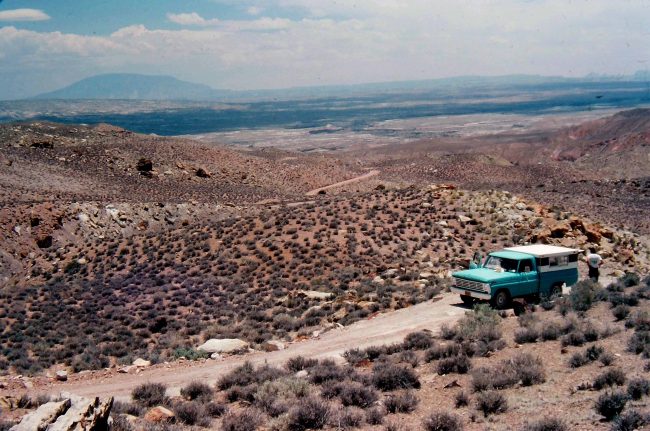
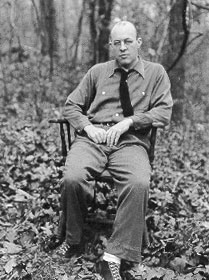
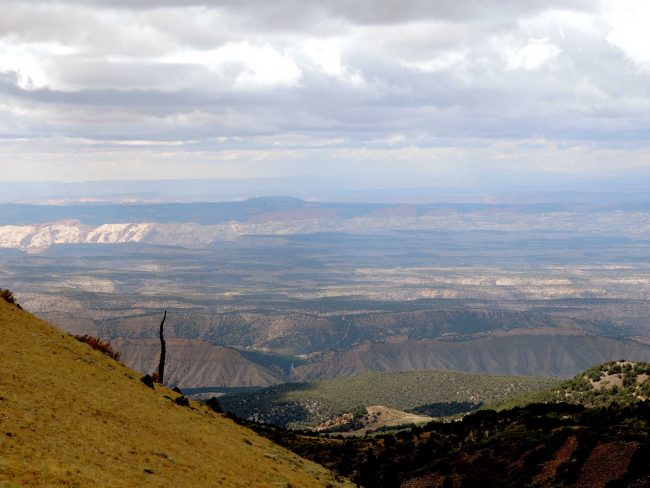
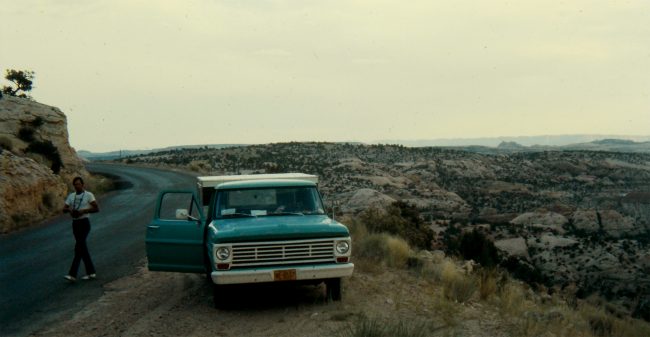
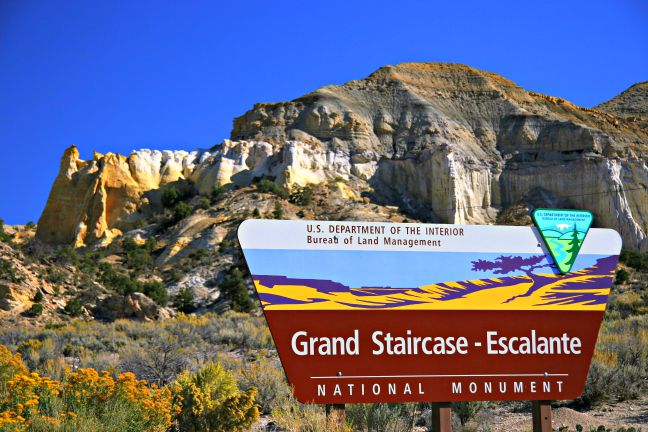


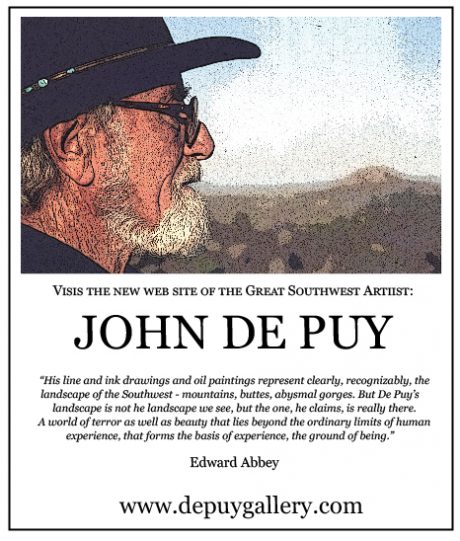
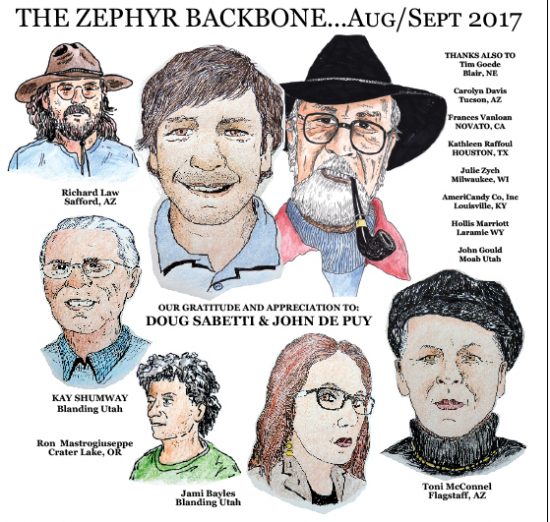




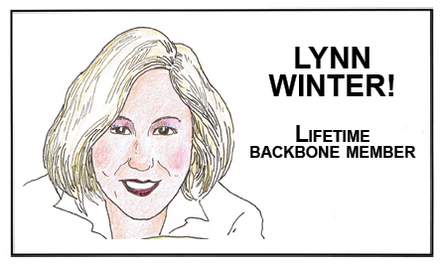
This article assumes, as do virtually 100% of humans, that the entire Earth belongs to humans, and that we have the right to go anywhere, and do anything, that we want. This is nonsense. We got here 3.8 billion years after everyone else, and force doesn’t confer title. Zahniser was absolutely correct: wilderness is wildlife habitat, period, and best when humans are absent and not tramelling from afar. There is nothing special about Native Americans; they are first and foremost human, and not necessarily easier on the land than the rest of us. The very first humans to arrive in Hawaii immediately wiped out a number of species. The same in New Zealand. The most important divide is humans vs. the rest of Creation. See http://mjvande.info/scb4.htm and http://mjvande.info/india3.htm.
Loch, you’re at it again! What a precocious and provocative rapscallion ye! By your own descriptions, our crazed city of Boulder is also a wilderness. After all, a flash flood could wash you away, a hulking CU football player might take a dislike to your goatee and beat the living crap out of ya, or lightning might strike your pate and flash-burn you to a crisp. All phenomenon outside of human control. And if you wish to take philosophy to its farthest edges, you can argue that all the human environment is a wilderness. Humans are natural creatures, we didn’t come from outer space, right? Even if we did, what makes extraterrestrial anything less natural? So pollution and overpopulation are, indeed, the natural consequences of a natural creature behaving as its genetic instruction bades it. That’s us! The human animal… in any case, I enjoyed your ruminations and they made me think. Think of THAT… human animals thinking… hmm… isn’t that what gets us into trouble in the first place?
IN PRAISE OF LOCH WADE (letter to editor, June 2008)
Thanks Jim, for publishing Loch Wade’s essay titled “Do We Really Need Wilderness – It Depends on your Definition.” I’ve been waiting years for somebody, anybody, to fire the next salvo in the most important cultural debate we could have: How should we live with the land? I guess we civilized people would rather just pretend that our ship of state floats above it like some kind of Destroyer-class warship.
Do you remember when those first torpedoes started exploding below decks in 1995, fired by William Cronon with his “The Trouble with Wilderness” essay that just nailed what’s really wrong with us? (Euro-American white folks, that is.) I guess because they were mortally damaged then, professional environmentalists never did return effective fire, and now I’ll match their hopelessness with my own stupid hope that they can’t spin this sinking ship much longer.
First, Cronon showed us that one of our primary wilderness foundations, the idea of the sublime, comes from Western thinking that separates humans from both God and Nature. No matter which one we’re striving to be re-united with, we pursue it with an unearthly zeal that totally ignores the only thing that matters: what we do everyday in order to live. Then he reminded us of another (mostly American) cultural construct supporting wilderness: the passing of the frontier, and how that desperate attempt to preserve our defining moment in history led in no small part to the wilderness movement. Ever since Teddy Roosevelt, urbanized American elites have been trying to uncover their “rugged individualist” character, testing themselves in battle against “the wilderness” with what little remains of their leisure time. Finally, when we ignored and insulted the people who were here before us (again) by worshiping “uninhabited, pristine wilderness”, we completed our recipe for disaster, and made it law, Zahnizer’s 1964 Wilderness Act.
Other, more sustainable cultures could and should preserve wild lands, but our official, legal rationale, reflecting misguided notions of who we are and what our history is, and including no thought at all about how we actually live, should make us wonder whether anything has really been saved. And obviously, the US is so fractured now that any attempt to rewrite the Wilderness Act would be impossible. So we’re stuck with another unworkable idea in our law. Anybody else hear the bell tolling?
Cronon says that “The dream of an unworked natural landscape is very much the fantasy of people who have never themselves had to work the land to make a living.” Of course, the progressives would reply that with technology ripping more and more resources from the land faster and faster, we can have more and more people in the cities and still preserve wilderness. That kind of thinking leads to more and more idiots like me tiptoeing around cryptobiotic soil while carrying 40 lbs of food, water and gear on our backs, sure that we are “leaving no trace”. As Loch Wade would say, “what is wild about that?”
After building expertly on Cronon’s thesis (“it was civilization that created the wilderness, where one had never been before!”), Loch is now finishing us off by showing us that we are horrified to even think about what it means to live sustainably with the land. And that real freedom is synonymous with the real wild. Talk about terrorism! Clearly, nobody is going to come up with an idea that allows all of us, all 6.5 billion, soon to be 9 billion farmers to live with this Earth sustainably. The professional enviros always complain that by talking about this unpretty picture we’re not helping anything. Obviously, they don’t remember that young people, more than anything else we can give them, need our honesty. At least this way, with Loch Wade’s essay by their side, they can start dreaming now about a real life in the wild!
Doug Meyer
Flagstaff AZ
Today’s prevailing view seems to be that “I am too civilized to care about wilderness or nature.”
virginity